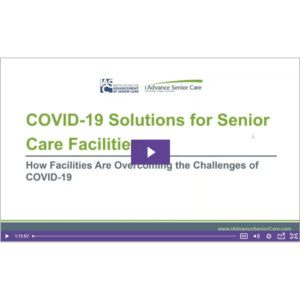Long-term care emergency preparedness
Fires. Floods. Tornadoes. Hurricanes. Shootings. Utility failures. Pandemics. Domestic violence. Hazardous material incidents. Nuclear power emergencies. Missing residents. The list of potential emergencies that can interfere with normal operation goes on and on.
The Centers for Medicare & Medicaid Services (CMS) now requires long-term care facilities to have a written emergency operation plan (EOP) that is consistent with the hazards they face and also requires that facilities provide realistic training for employees, regardless of shift. Some facilities are not finding this to be a challenge because they already were ahead of the game; others are finding this to be one of the more difficult challenges they have faced.
In a publication dated Feb. 28, CMS issued Survey and Certification Letter 14–12, which provided key requirements for compliance. Key points:
- Work in collaboration with your local emergency management agency.
During an emergency, seamless integration with the local public safety agencies is critical. Working with your local emergency management teams will help achieve this goal and will help assure that your plan is consistent with local emergency response plans.
- Conduct a hazard vulnerability assessment (HVA).
Not all communities are created equal, and the hazards they face are not the same, either. Many healthcare systems have found their EOPs to be ineffective when they tried to create one EOP and implement it across all facilities in the network. An HVA allows each facility or community to identify the hazards that are specific to that location, and to develop an EOP consistent with the hazards they identify.
- Provide direction in the plan to help staff make critical decisions.
Making the decision to evacuate or to shelter in place is a “damned if you do/damned if you don’t” position for an employee to be in. The plan must include checklists or other methods to help employees make the right decision.
- Incorporate a shelter-in-place plan and an evacuation plan.
The plan must not only include provisions for the continuity of care, but must also address transportation, foods and supplies, pharmaceuticals and much more.
- Include communication infrastructure contingency planning.
The plan must include communication infrastructure contingencies in the event of telephone failures.
Before attempting to develop an EOP, responsibility and accountability must first be established. The Safety Committee, which every facility should already have in place, has proven to be the logical starting point in many facilities. Some facilities have found success by forming an Emergency Preparedness Subcommittee within the Safety Committee. There is no right or wrong method, but you will enjoy much more success and buy-in when responsibility is shared by a group.
Training is another key component that must be included. Employees must be educated on the contents of the plan, and then trained on how to execute the plan. Training should be realistic, and we often recommend that training start with a tabletop exercise, which later can be expanded to functional exercises and full-scale drills. Training must be provided to all employees on all shifts, and each exercise must be evaluated for efficacy and outcomes. Any deficiencies in the drills should be corrected, and then the drills should be done again.
Lastly, I cannot say enough about the importance of the incident command system as a tool for emergency planning and emergency operations. The Nursing Home Incident Command System (NHICS) is quickly becoming an industry standard that should be practiced in all facilities. If your facility is not using the NHICS system, implementing this system and training your employees in NHICS should be a top priority (if you aren’t familiar with the system, send me an email and I will put you in touch with the right resources).
When you look at the scope of the CMS compliance checklist, you will realize that I could go on and in this article. The points are very simple: Long-term care facilities must have an EOP that is realistic and reflective of the hazards the facility may face. The plan must be tested regularly and updated accordingly, and all employees must be trained in the plan, regardless of shift.
If you have questions or need assistance, reach out to me. In the meantime, stay safe and stay in touch.

Steve Wilder, CHSP, STS, is president and chief operating officer of Sorensen, Wilder & Associates (SWA), a healthcare safety and security consulting group based in Bourbonnais, Ill. SWA performs workplace safety compliance audits and security vulnerability assessments in all types of healthcare facilities. Wilder can be reached at (800) 568-2931 or swilder@swa4safety.com.
Related Articles
Topics: Disaster Preparedness , Executive Leadership










